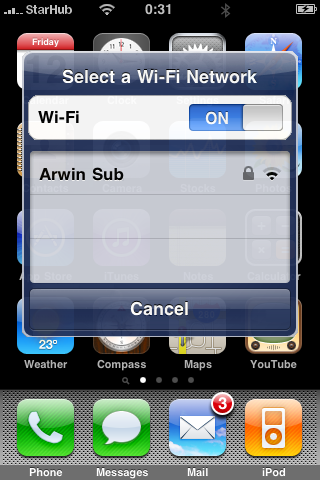
What’s the difference between the image on the left and the image on the right?
The image on the left is the recently posted map [gizmodo.com] of the data that is being stored in your iPhone (and your computer that your iPhone syncs with). That data amounts to all the locations you have taken your phone since you upgraded it to iOS 4.
The image on the right is basically the same type of data — though it’s presented as an animation so you only see one spot in the image above. That data is from the your phone company — and it does not matter what phone you have, just having a phone on the network is enough for the operator to collect the data, and in many places they are required by law to keep this data for some period of time. (The map on the right also shows all the calls and messages to and from the phone; in this case stripped of the details but be assured the raw data that your phone company has does show who you are calling, I wonder if Apple is creating a log of this data on your iPhone too? I bet they are.) I ranted about this map a while back [confusion.cc].
There seems to be a lot of concern about the fact that your iPhone is logging this type of data. The FCC want’s to know why. Congress wants to know why. (See here [politico.com]). But there does not seem to be anywhere near as much concern about the fact the your phone company has the same data, more detailed data in fact. There should be. In fact, if privacy is your concern, or fear of Big Brother, you should be much more concerned about what your phone company knows than what Apple might know.
The big difference to me between the two is that the historical data that Apple is collecting is on the device and backed up to your computer. While the data that is collected by your phone service provider is on their servers and therefore subject to Lawful Intercept. According to Wikipedia Lawful Intercept [wikipedia.org] is:
obtaining communications network data pursuant to lawful authority for the purpose of analysis or evidence.
That means that all that data; including locations, calls made, calls received, messages sent and received, as well as who those calls and messages where to or from, is available to law enforcement if needed. This is generally a good thing; if it helps to catch murderers or sexual predators or other criminal types. But it’s not hard to image it being used for less savory purposes like tracking dissidents or in more authoritarian places tracking political opponents or protesters. This is the kind of data that warrantless wiretapping was collecting, and it’s done by just making a request to your phone service provider —if the provider or the government is good enough they could collect this data in real time. Meaning we are all carrying around Big Brother approved “bugs” in our pockets.
It’s also worth noting that the data collected by your phone company is required for it to provide the service you are paying for. There has been speculation about what Apple wants this data for; I imagine it will come down to advertising or something, some way to make more money off of iPhone owners; in the end Apple is a company interested in making money. In this case consumers will quickly forget the issue while privacy advocates piss into the wind about for much longer.





